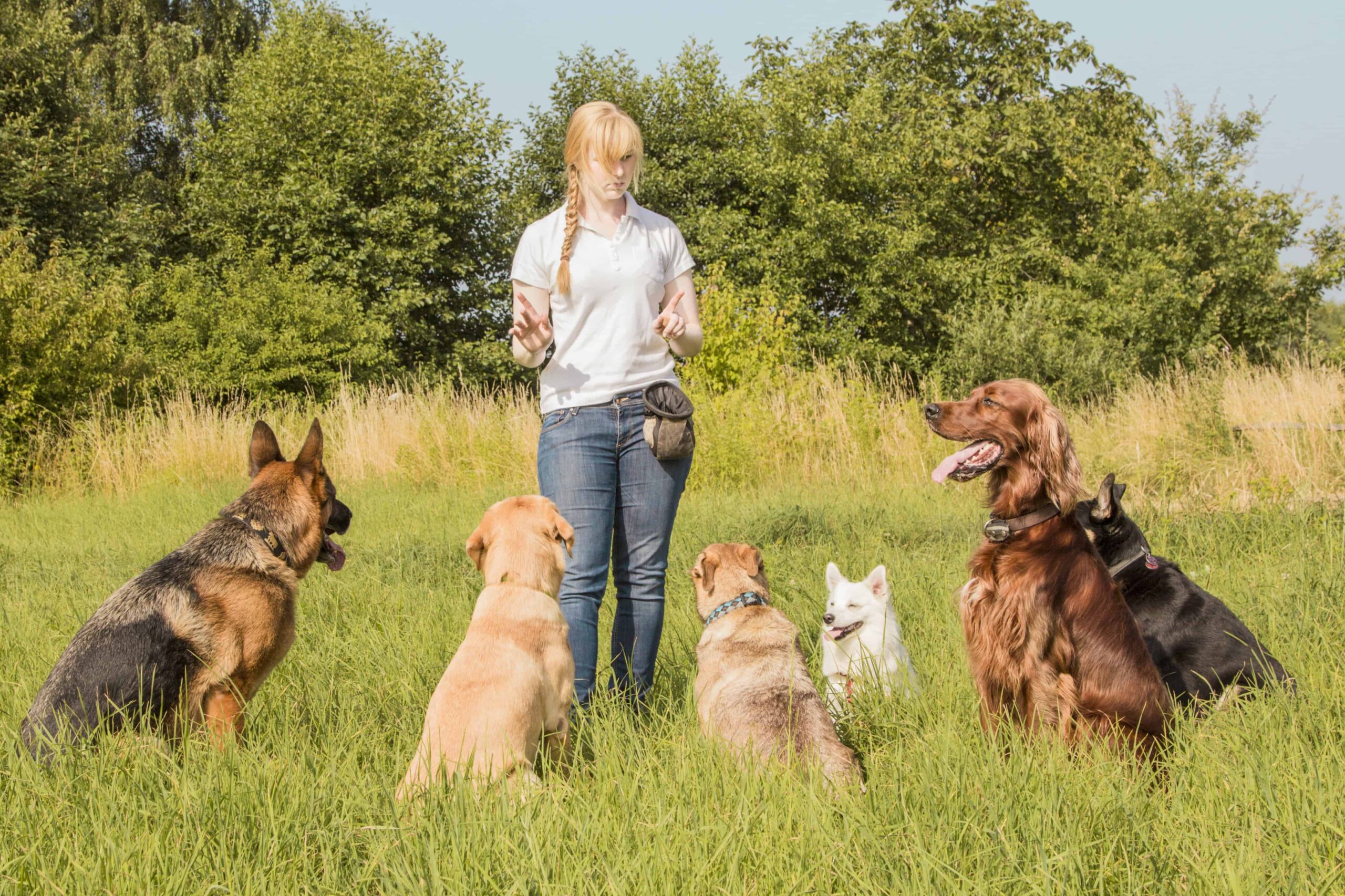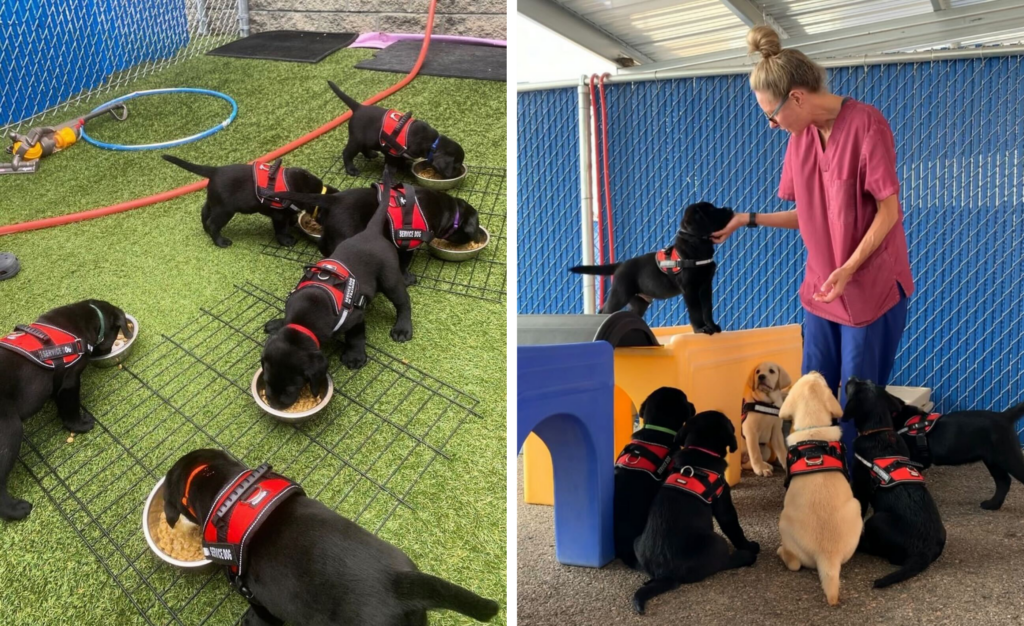Top Pet Educating Methods Every Owner Must Know

Positive Support Techniques
Using positive support techniques is vital for efficient pet dog training, as it promotes a trusting bond in between the instructor and the pet. This method focuses on fulfilling preferable habits as opposed to punishing unfavorable ones, producing a setting for discovering. Rewards can include deals with, appreciation, or playtime, which inspire dogs to repeat the actions that earn them these benefits.

In addition, this technique enhances the canine's interest for training sessions. They are much more engaged and receptive when pet dogs connect training with positive experiences. Dog training. Past immediate behavior modification, positive reinforcement motivates a collaborative partnership between the pet and trainer, decreasing stress and anxiety and anxiety
To optimize effectiveness, it is critical to provide rewards promptly, making sure the canine connects the habits with the support. In significance, favorable reinforcement methods not just produce better-trained pets yet likewise promote an unified partnership between pet dog and owner.
Clicker Training Technique
The clicker training technique is a very efficient strategy that builds on the concepts of favorable support by adding an unique sound to mark desired actions. This method uses a tiny portable tool that creates a clicking sound, enabling trainers to communicate with their dogs in a clear and immediate manner. When a dog does an actions that the owner wishes to urge, the clicker is triggered, complied with by a reward, typically in the kind of deals with or praise.
The key to effective remote control training hinges on consistency and timing. It is important to click at the specific minute the wanted behavior takes place, ensuring that the pet dog connects the sound with the action and the succeeding reward. This technique not only boosts communication but also cultivates a more powerful bond in between the proprietor and the pet, as it urges interaction and communication throughout training sessions.
Remote control training can be related to a range of commands and habits, from standard obedience to a lot more complicated methods. Its convenience and performance make it a popular strategy among specialist trainers and pet proprietors alike, leading the way for a trained and receptive canine buddy.
Chain Training Basics
Effective chain training is necessary for ensuring a safe and pleasurable walking experience for both pets and their owners. Dog training. Chain training need to begin very early and be come close to with patience and consistency. Start by choosing an appropriate chain and collar or harness. A level collar may help some canines, while others might gain from a harness that reduces pulling.
Present your pet dog to try this site the leash progressively, permitting them to explore it in a comfy atmosphere. Practice loose-leash strolling once they are accustomed. This entails rewarding your pet dog for walking beside you instead than drawing in advance. Usage treats and praise to enhance preferred habits, and make sure to continue to be assertive and tranquil.
If your canine starts to draw, quit walking instantly. Additionally, technique different walking environments to aid your pet dog adapt to diversions.
Regular technique will solidify your pet's understanding of leash rules. Bear in mind that chain training is a recurring procedure; perseverance and uniformity will generate the ideal outcomes, fostering a favorable experience for both you and your canine companion.
Socializing Approaches
Socializing is an essential aspect of canine training that should preferably begin throughout puppyhood but can be valuable at any type of age. Reliable socializing assists pet dogs establish self-confidence and minimizes the possibility of behavior issues. To implement successful socializing approaches, reveal your canine to a variety of environments, people, blog here and various other animals.
Start with regulated setups, such as young puppy courses or organized playgroups, where young pet dogs can interact securely. Gradually introduce your pet dog to new experiences, consisting of different noises, surfaces, and tasks. Ensure these encounters are favorable and satisfying to establish a complacency.
For adult canines or those doing not have direct exposure, begin with low-stress scenarios. Short, positive communications with friendly people and calm pets can produce favorable associations. Make use of treats and appreciation to reinforce preferable habits during these experiences.

Uniformity and Patience
Recognizing the significance of consistency and patience in dog training is essential for attaining lasting outcomes. Training a canine is a steady procedure that needs a structured approach and unwavering commitment from the proprietor. Each command or habits should be enhanced constantly to assist the canine understand what is expected of them. Irregular training can lead to confusion, making it tough for the pet dog to understand commands or habits, eventually hindering progression.
Additionally, persistence is a sites vital part of efficient training. Dogs, like people, learn at their own rate. Some might understand concepts promptly, while others could take longer. It is essential for proprietors to stay tranquil and supportive, strengthening positive actions without resorting to irritation or punishment. This cultivates a trusting relationship between the dog and owner, motivating a more ready and passionate learner.
To grow consistency and persistence, establish a normal training routine, make use of the same commands, and guarantee that all family participants apply the very same training principles - Dog training. By doing so, you produce a secure setting conducive to finding out, allowing your pet to establish and prosper right into a well-behaved friend
Conclusion
Finally, efficient canine training techniques, such as positive support, clicker training, and proper leash training, are essential for fostering a healthy owner-dog partnership. Furthermore, applying socialization methods and keeping uniformity and perseverance throughout the training procedure adds significantly to a dog's overall health. By incorporating these approaches, pet proprietors can promote the growth of well-adjusted, loyal family pets, ultimately improving the lifestyle for both the owner and the pet.
Amongst the most prominent approaches are positive reinforcement, remote control training, and chain training, each offering one-of-a-kind advantages that contribute to a well-behaved pet. As we explore these fundamental methods, it becomes evident that understanding their subtleties can dramatically affect the training experience and the pet's general habits.Using positive reinforcement methods is necessary for effective pet dog training, as it promotes a trusting bond in between the dog and the trainer.In final thought, reliable dog training techniques, such as favorable support, clicker training, and proper chain training, are necessary for promoting a healthy owner-dog partnership. By incorporating these approaches, pet owners can help with the advancement of well-adjusted, obedient pets, inevitably improving the high quality of life for both the owner and the dog.